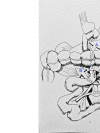Early and late complications of bariatric operation
- PMID: 30402562
- PMCID: PMC6203132
- DOI: 10.1136/tsaco-2018-000219
Early and late complications of bariatric operation
Abstract
Weight loss surgery is one of the fastest growing segments of the surgical discipline. As with all medical procedures, postoperative complications will occur. Acute care surgeons need to be familiar with the common problems and their management. Although general surgical principles generally apply, diagnoses specific to the various bariatric operations must be considered. There are anatomic considerations which alter management priorities and options for these patients in many instances. These problems present both early or late in the postoperative course. Bariatric operations, in many instances, result in permanent alteration of a patient's anatomy, which can lead to complications at any time during the course of a patient's life. Acute care surgeons diagnosing surgical emergencies in postbariatric operation patients must be familiar with the type of surgery performed, as well as the common postbariatric surgical emergencies. In addition, surgeons must not overlook the common causes of an acute surgical abdomen-acute appendicitis, acute diverticulitis, acute pancreatitis, and gallstone disease-for these are still among the most common etiologies of abdominal pathology in these patients.
Keywords: acute care surgery; complications; morbid obesity.
Conflict of interest statement
Competing interests: None declared.
Figures
Similar articles
-
Can abdominal surgical emergencies be treated in an ambulatory setting?J Visc Surg. 2015 Dec;152(6 Suppl):S81-9. doi: 10.1016/j.jviscsurg.2015.09.015. Epub 2015 Oct 27. J Visc Surg. 2015. PMID: 26522504 Review.
-
What every hospitalist should know about the post-bariatric surgery patient.J Hosp Med. 2012 Feb;7(2):156-63. doi: 10.1002/jhm.939. Epub 2011 Nov 15. J Hosp Med. 2012. PMID: 22086862 Review.
-
Do acute care surgeons need bariatric surgical training to ensure optimal outcomes in obese patients with nonbariatric emergencies?Surg Obes Relat Dis. 2018 Mar;14(3):339-341. doi: 10.1016/j.soard.2017.12.007. Epub 2017 Dec 14. Surg Obes Relat Dis. 2018. PMID: 29428693
-
Management of acute postoperative hemorrhage in the bariatric patient.Gastrointest Endosc Clin N Am. 2011 Apr;21(2):287-94. doi: 10.1016/j.giec.2011.02.002. Gastrointest Endosc Clin N Am. 2011. PMID: 21569980 Review.
-
[Increased requirements for the challenging abdominosurgical management of morbid obesity - what does the abdominal surgeon need to know?].Zentralbl Chir. 2013 Aug;138(4):456-62. doi: 10.1055/s-0033-1350693. Epub 2013 Aug 15. Zentralbl Chir. 2013. PMID: 23950081 German.
Cited by
-
Benefits in routinely measured liver function tests following bariatric surgery: a retrospective cohort study.J Diabetes Metab Disord. 2023 Sep 24;22(2):1763-1768. doi: 10.1007/s40200-023-01311-4. eCollection 2023 Dec. J Diabetes Metab Disord. 2023. PMID: 37975098 Free PMC article.
-
Common, Less Common, and Unexpected Complications after Bariatric Surgery: A Pictorial Essay.Diagnostics (Basel). 2022 Oct 31;12(11):2637. doi: 10.3390/diagnostics12112637. Diagnostics (Basel). 2022. PMID: 36359480 Free PMC article. Review.
-
Pharmacotherapy as an Augmentation to Bariatric Surgery for Obesity.Drugs. 2024 Aug;84(8):933-952. doi: 10.1007/s40265-024-02029-0. Epub 2024 Jul 6. Drugs. 2024. PMID: 38970626 Free PMC article. Review.
-
Can Consultation by a Clinical Pharmacist Prevent Morbidity and Mortality in Patients Undergoing Bariatric Surgery?J Clin Med. 2024 Jan 5;13(2):310. doi: 10.3390/jcm13020310. J Clin Med. 2024. PMID: 38256443 Free PMC article.
-
Severe Gastric Ulcerations With Impending Necrosis in a Patient Who Had Gastric Balloon Insertion Following Previous Sleeve Gastrectomy.Cureus. 2022 Mar 9;14(3):e22983. doi: 10.7759/cureus.22983. eCollection 2022 Mar. Cureus. 2022. PMID: 35415033 Free PMC article.
References
LinkOut - more resources
Full Text Sources
Medical
Research Materials


